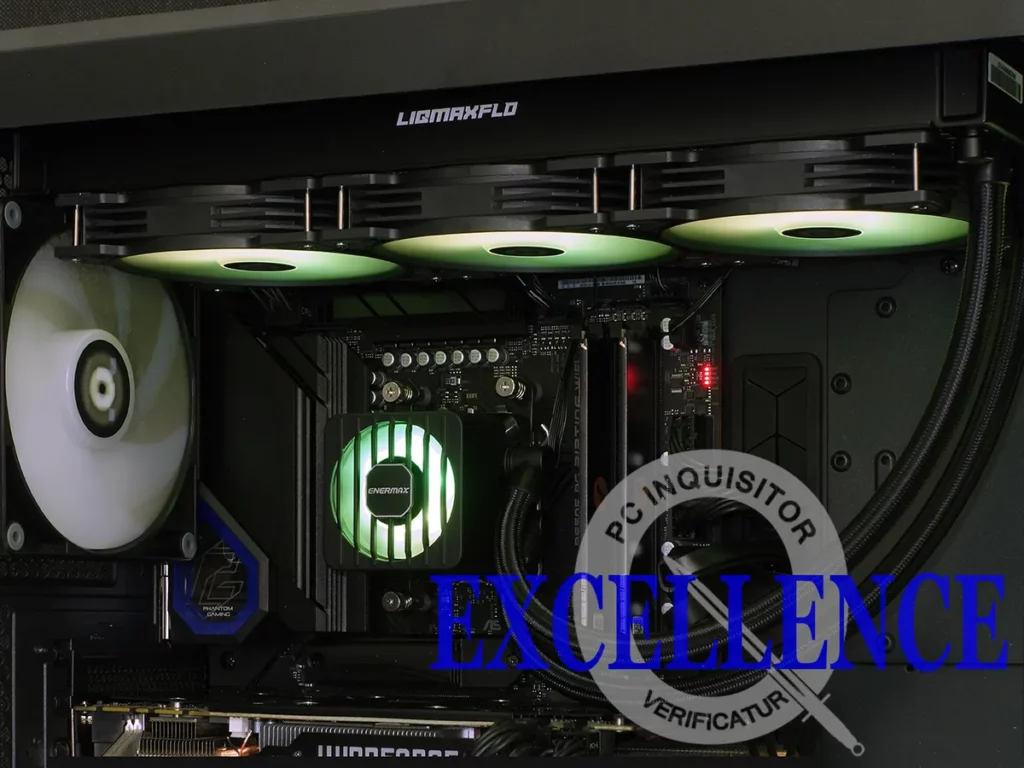Enermax Liqmaxflo 360mm Liquid CPU Cooler Review
Making a CPU cooler more effective means getting heat into the air more quickly. Larger fins for example expose the cooler to more air, while faster fans expose more air to the cooler. Enermax chose the first path when it upsized its Liqmaxflo radiator thickness to 38mm, compared to the 25 to 28mm typical of its closed-loop liquid cooling rivals. Today’s test will reveal whether fan speeds have been similarly altered.
| Enermax Liqmaxflo 360mm (ELC-LMF360T-ARGB) | |
| Thickness | 38mm (65mm w/fans) |
| Width | 120mm (4.74″) |
| Depth | 399mm (15.72″) |
| Block Height | 70mm (2.76″) |
| Speed Controller | PWM (motherboard typ.) |
| Cooling Fans | (3) 120 x 25mm |
| Connectors | (6) Proprietary, (2) 4-Pin PWM, (2) ARGB in, (2) ARGB out |
| Weight | 1751g (62 oz) |
| Intel Sockets | 2066/2011, 1700, 1200/115x/1366 |
| AMD Sockets | AM5/AM4 |
| Warranty | 5-Years |
| Web Price | $128 |
For those who don’t remember, the term “closed-loop” simply refers to a liquid cooling system that has no openings to add other components. This type of system is usually considered to be permanently sealed, though Enermax makes the exception to place a fill port on the Liqmaxflo series. It also includes a small bottle of coolant, replacement thermal paste, and a power supply jumper to ease filling and bleeding of the system without running power to main components. Other boxed items include power splitter and adapter cables, three hose clips, a discrete ARGB controller with SATA power input, AMD and Intel mounting kits, the cooler itself, mounting screws for the water block, and mounting screws for the radiator and fans.
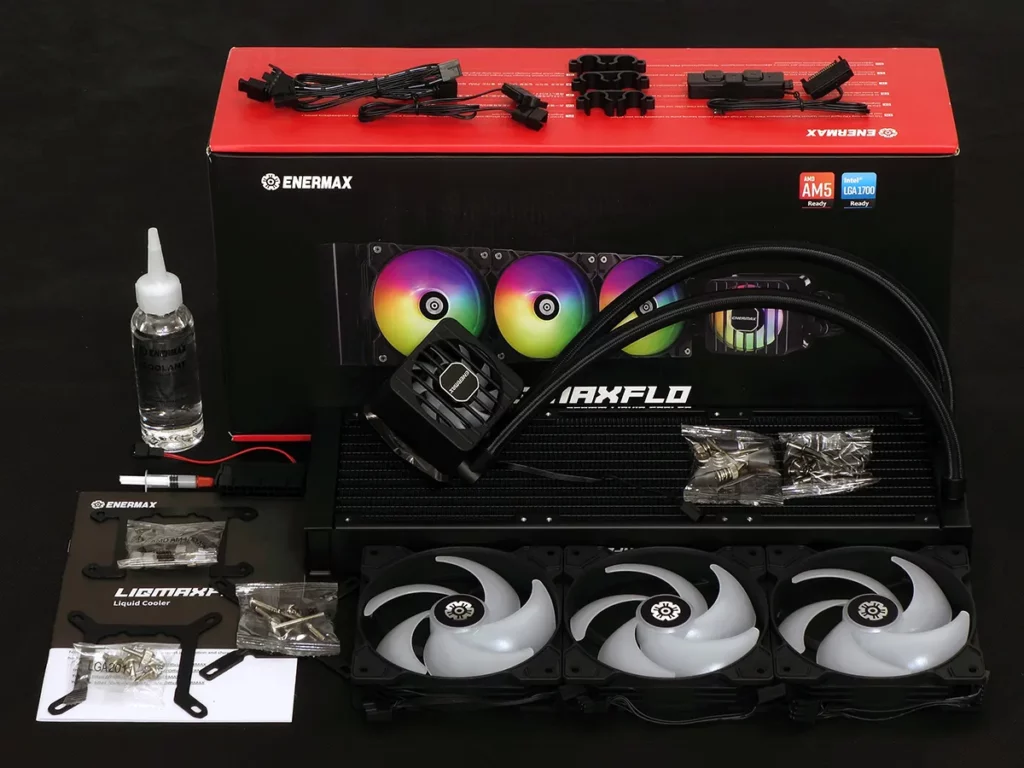
The cables of each fan includes both male and female versions of a proprietary 8-pin interface, with the extra connectors allowing all three fans to be chained together. That interface get power and lighting signals via an adapter cable that uses industry standard PWM fan control and standard 3-pin ARGB inputs. In addition to the proprietary interface, PWM and ARGB inputs are also wired to standard outputs so that this cable can be daisy chained in combination with the pump.
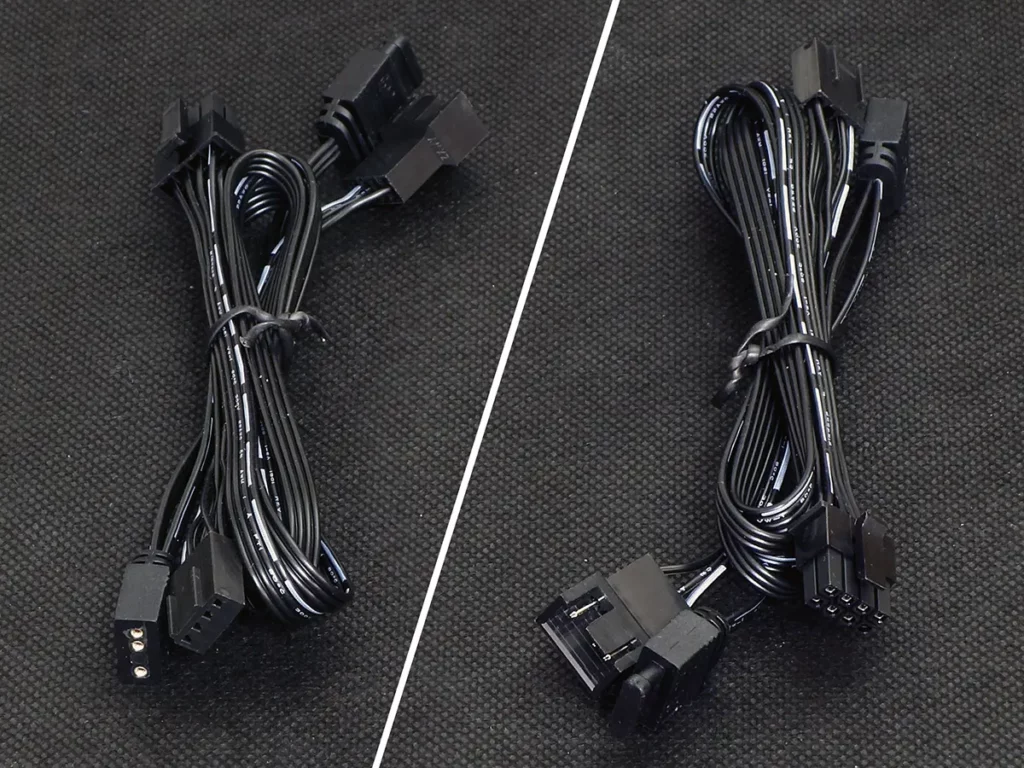
Builders who fear that their motherboard’s PWM fan header might not carry enough power for three fans and a small pump will find an SATA power to four-pin PWM-style fan adapter cable included.
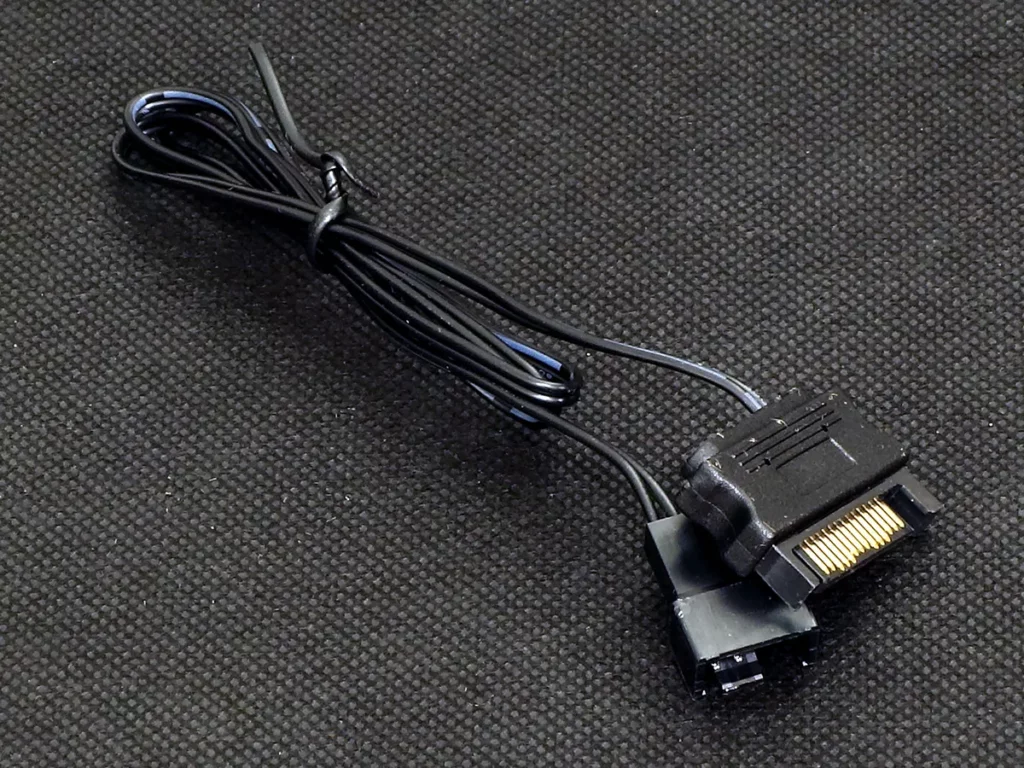
Builders whose motherboards lack any ARGB header can instead control the Liqmaxflo’s lighting from an included ARGB controller, which is also powered from an SATA power connector. 10 lighting modes, 8 colors and a variety of brightness levels are all achievable through this simple, software-free device.

The Liqmaxflo pump and water block combo is topped with a small ARGB fan, and this too includes both male and female ARGB connectors to enable device chaining. Tucked under a magnetically attached grilled shroud, the purpose of this fan is to blow a small amount of air toward onboard components such as the CPU voltage regulator and any nearby M.2 drives, in the same manner as the larger unit found in our previously-tested BR24 cooler sample.
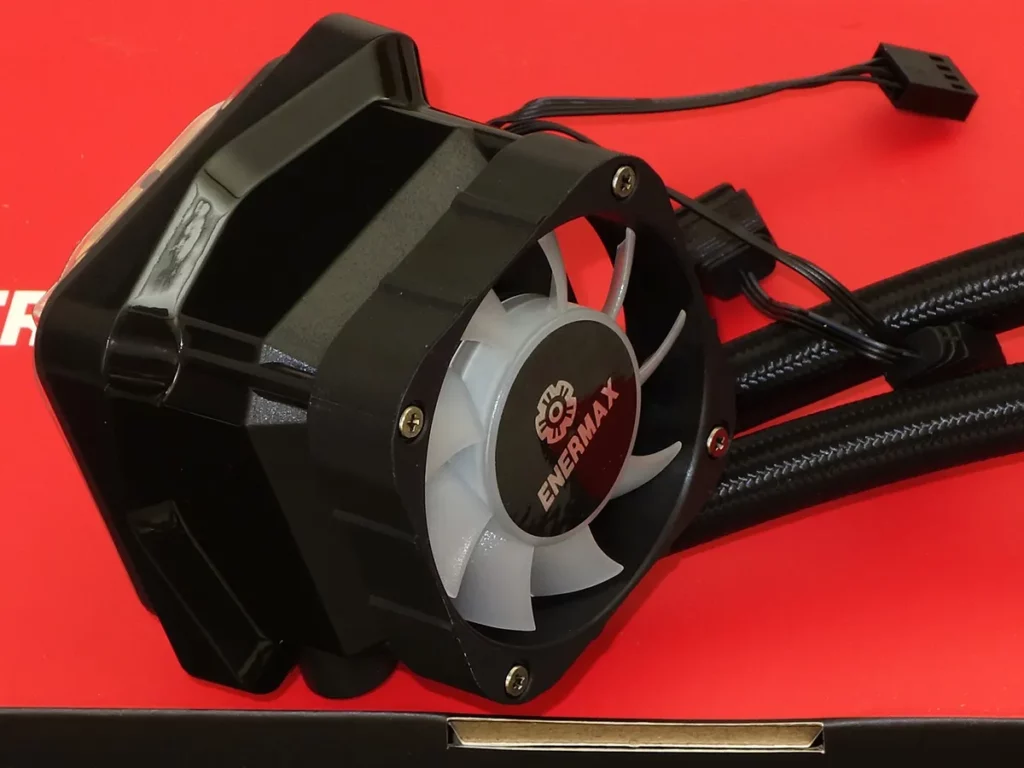
The other side of the pump housing features a pure copper coldplate (heat exchanger) with factory applied Dow Corning TC-5888 thermal compound. As nice as this compound appears to be, test consistency demanded that we use the same Arctic MX-4 that we’ve used to test every other CPU cooler. Just above the coldplate, a grove in the pump housing is designed to secure either the AMD or Intel pump mounting bracket that matches your socket.
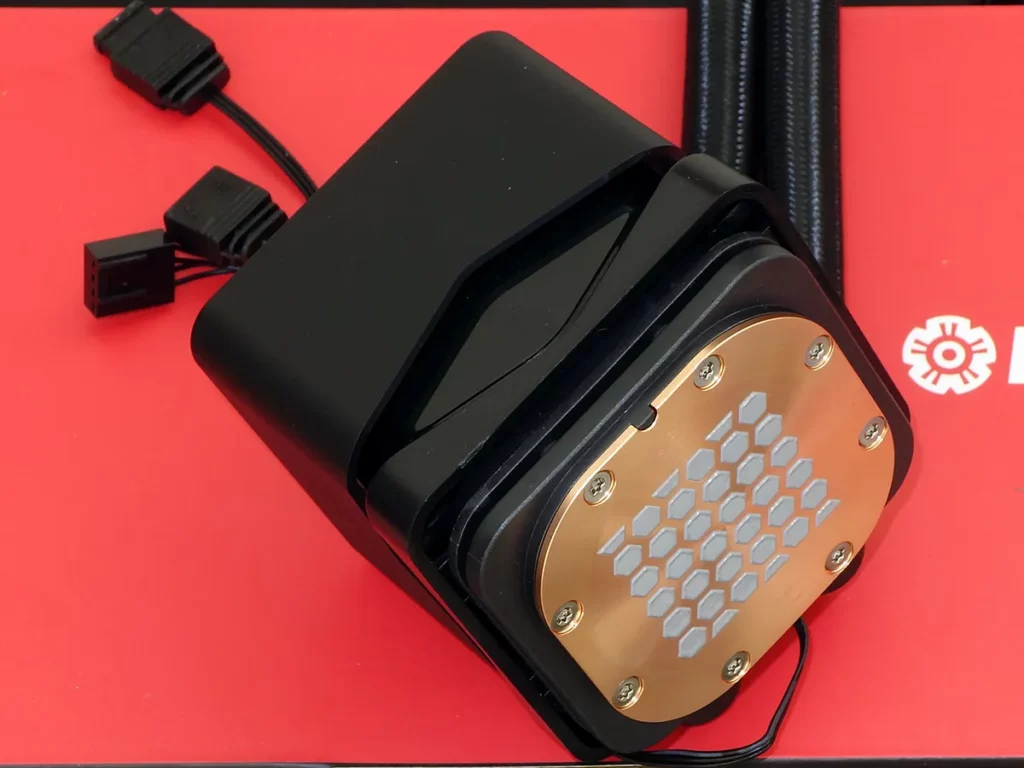
AMD installations begin with removing the motherboard’s plastic clip brackets and replacing that bracket’s screws with an included set of custom standoffs. Intel LGA 2066 and 2011 installations follow the same procedure while using different standoffs. Since Intel’s mainstream LGAs (1700, 1200, etc) have no backplate to screw into, they instead use a supplied backplate and screw set with special standoffs to provide the protruding threads seen here.
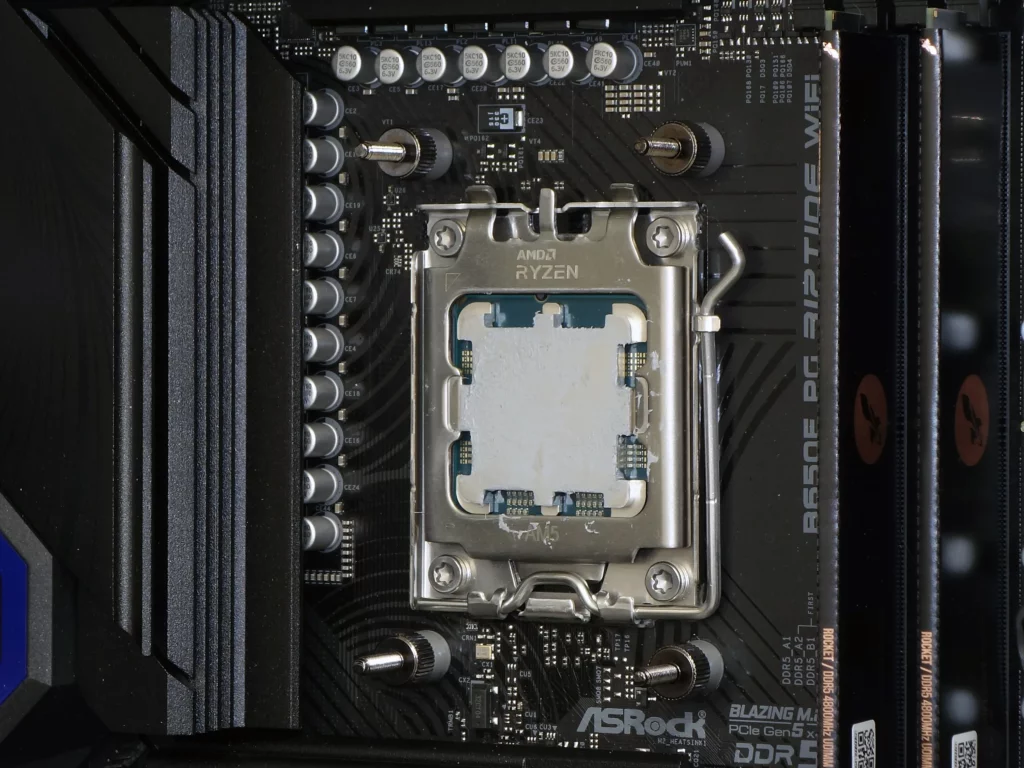
Regardless of how your platform gets to the point where it has threads sticking out from shoulders, the pump/water block/bracket combo is secured using spring-loaded shoulder nuts.
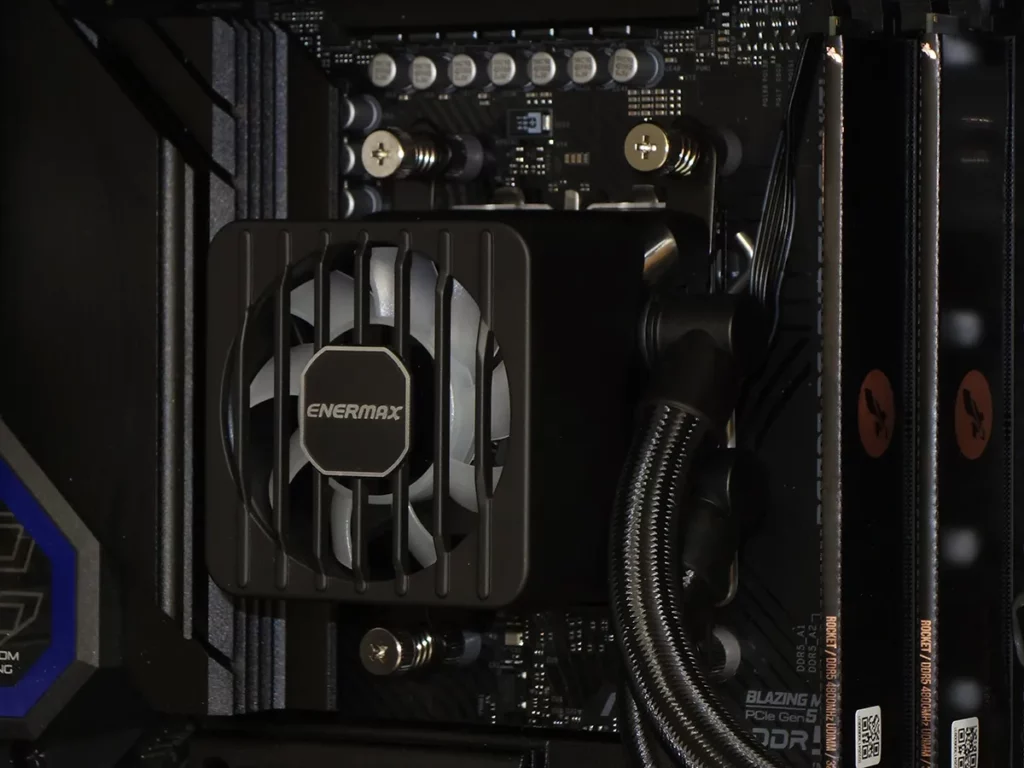
The Liqmaxflo’s extra radiator thickness places the fans a little closer to the voltage regulator heat sinks of our motherboard. That, and the included pump-top fan, should both help lower voltage regulator temperature.
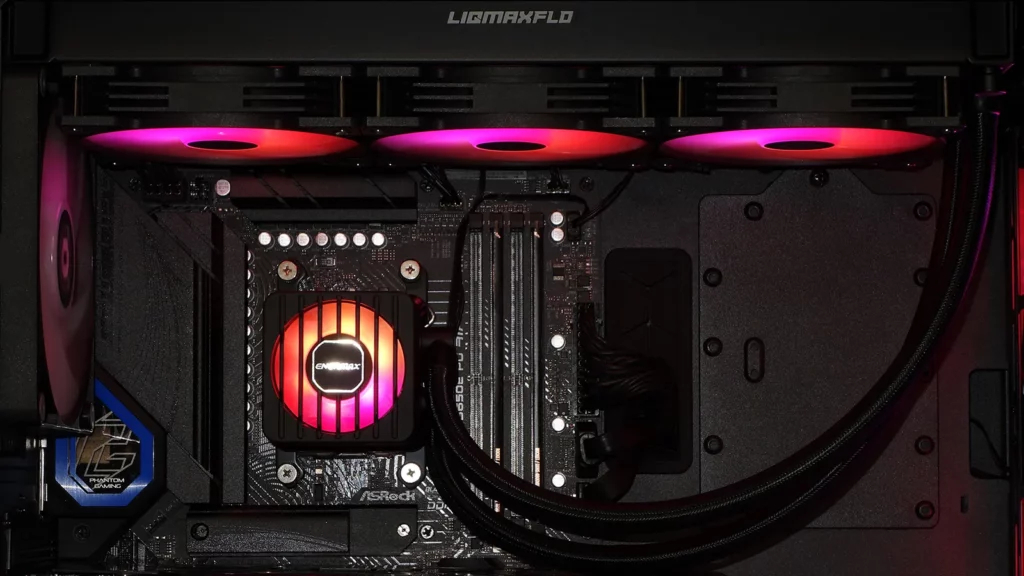
One thing we noticed was that like the lid of our most recently reviewed 360mm cooler, the pump-top fan of the Liqmaxflo 360mm has an integrated ARGB mode that can only be turned off by connecting an ARGB controller. Unlike that competitor, the Liqmaxflo 360mm includes a discrete ARGB controller. Also unlike its competitor, the Liqmaxflo’s fan’s integrated ARGB mode is not output to the male side of its passthrough connector: It serves only the fan that it sits on.
| System Configuration | |
| Case | Thermaltake Ceres 500 TG ARGB |
| CPU | AMD Ryzen 9 7900X: 12 cores/ 24 threads, 64MB L3 Cache O/C to 5.00 GHz at 1.25 V Core |
| Motherboard | ASRock B650E PG Riptide WiFi, BIOS 1.18 |
| RAM | Sabrent Rocket SB-DR5U-32GX2 64GB DDR5-4800 |
| System Drive | HP SSD FX900 M.2 1TB NVMe SSD |
The Liqmaxflo 360mm outperforms the VATN 360, but its CPU cooling prowess comes up surprisingly short of the thinner H150i RGB.
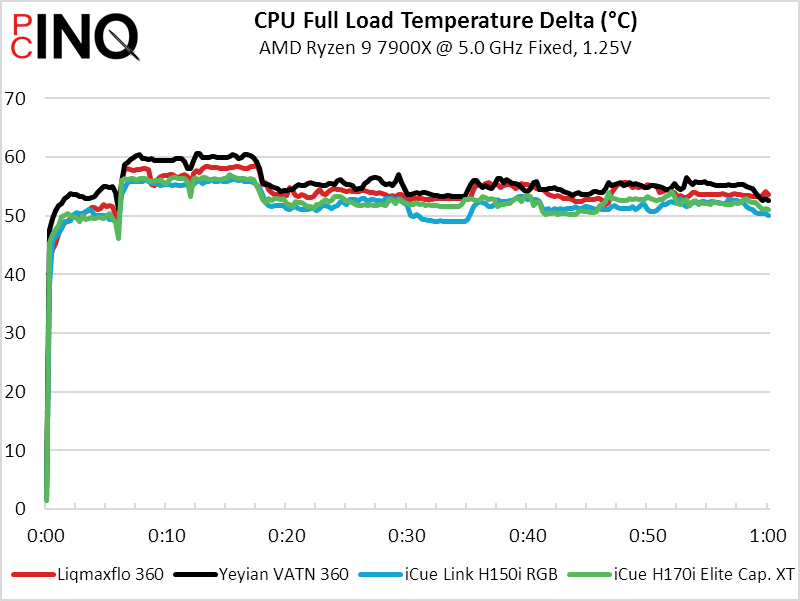
We have a feeling that the fan that sits above the Liqmaxflo 360mm’s pump has a larger impact than radiator fan position on our voltage regulator temperature, but regardless of the reason the Liqmaxflo wins this part of the comparison.

And here’s why we think that the local fan is carrying most of the voltage regulator cooling load: None of the fans are spinning very fast. Rather than use powerful fans against the thick radiator to become the obvious leader in CPU temperature, Enermax paired quieter fans to create the best overall user experience.
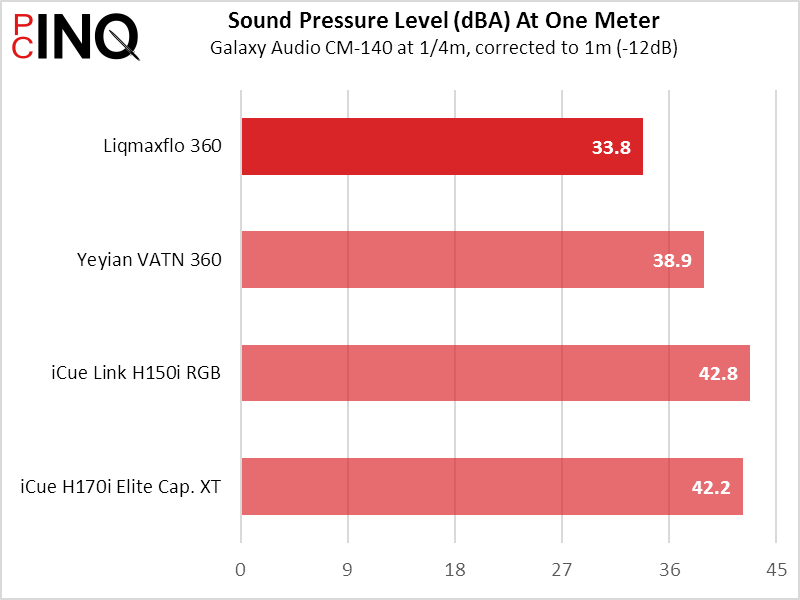
While our temperature and noise charts helped, it takes a combo chart to show just how much of a cooling-to-noise advantage that we’re finding in the Liqmaxflo 360mm.
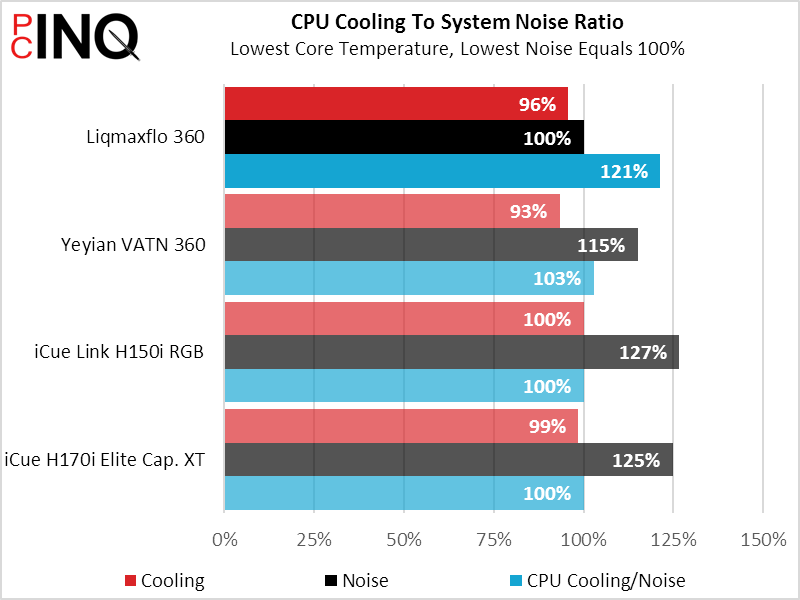
The Liqmaxflo 360mm costs a bit more than the VATN 360 and though it cools better, it’s not enough to put it over the top in a cooling-to-price comparison. Now if we were to use total performance, i.e. substituting each cooler’s cooling-to-noise ratio in place of the cooling number seen here. The Liqmaxflo would obviously beat everything.
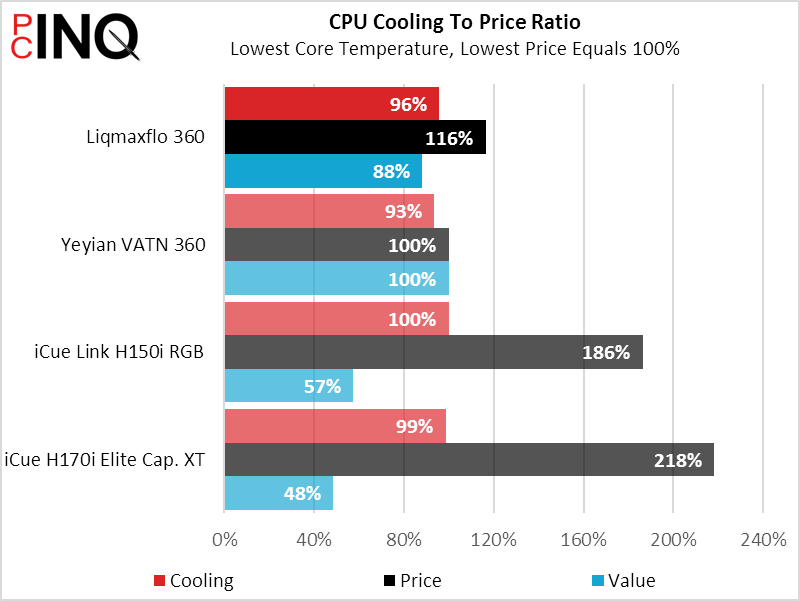
We don’t have an “editor’s choice” award because that seems too subjective to be a ranking for a site that focuses on definable truth, but sometimes such an award would come in handy. We instead have an “excellence” award for the best in category, and the Liqmaxflo 360mm has the best cooling-to-noise ratio of any cooler we’ve tested.
| Enermax Liqmaxflo 360mm (ELC-LMF360T-ARGB) | |
| Pros: | Cons: |
| Superb cooling-to-noise ratio Includes discrete ARGB controller | Included ARGB controller adds cost. |
| The Verdict: | |
| Thanks to its thick radiator and quiet fans, the Liqmaxflo 360mm provides the best cooling to noise ratio of any CPU cooler we’ve tested. | |


